Trip Itinerary
Itineraries are guidelines; variations in itinerary may occur to account for weather, road conditions, closures, etc. and to maximize your experience.
Fri., July 10 Arrivals in Lima | Welcome Dinner
Welcome to Lima! This bustling airport has a wonderful hotel just across from it, you simply walk across the street once you exit the airport. A representative of our company in Peru meets flights and assists you, but expect it to be easy to get to your hotel and settle in. They have a restaurant and bar if you arrive early.
Our travelers all arrive at different times today. Those in by 6:30 PM can enjoy dinner together in the hotel dining room, with your guide. We do recommend not coming in too late, it’s an early start to beat the Lima traffic and be on our way tomorrow.
Accommodations at Grand Costa del Sol Lima Airport (D)
Sat., July 11 Archeology at Pachacamac Oracle | Pucusana| Paracas
After an early breakfast at the hotel, we drive south of Lima towards Pachacamac Oracle, a fascinating archeology site. We stop at a few viewing sites to look out on the ocean where we may see boobies, terns, and other seabirds. As we retrace our steps to come back, we have multiple chances to bird this route. Today we want to have time at this large archeological site, which dates back approximately 1,800 years and was built by various cultures including the Lima, Wari, and Ychsma, as well as the Inca.
The Pachacamac complex includes temples, plazas, palaces, and pyramids and thrived for around 1,300 years until the Spanish invaded. The ceremonial complex is known as the ‘place where God speaks’ and housed the oracle of Pachacamac. After exploring the site and museum, we continue south and stop in the picturesque fishing village of Pucusana for a delicious local lunch.
Pucusana is located on the shores of a calm bay teeming with seabirds. Enjoy a boat trip around Pucusana Bay to observe the various marine bird species associated with the cold Humboldt Current—nesting Guanay and Red-legged Cormorants, loafing Peruvian Booby and Inca Tern, and maybe even a Humboldt Penguin (not to mention the endemic Seaside Cinclodes). Many of our past groups to Peru have visited this area—it’s a great place to start our trip!
After a few hours at Pucusana, we head further south to Paracas, famous for its prehistoric culture and artwork in the period 800-200 BC. Ancient textiles show use of natural dyes and intricate irrigation technology on the landscape has been found.
Accommodations at Paracas (B,L,D)
Sun., July 12 Flight Over the Nazca Lines | Paracas National Reserve
We head to the town of Pisco (yes, same name as the famous liquor that is made in the coastal valleys of Peru) after breakfast. Our route follows the coast and we make several birding stops.
Later in the morning, and dependent on weather conditions, we fly in small planes over the Nazca Lines, a UNESCO World Heritage Site and one of the greatest enigmas known to archeology. Constructed over 2,000 years ago, the Nazca Lines are groups of geoglyphs that cover an area of around 190 square miles. They were created by humans making depressions in the desert floor and many depict animals and plants. The lines have been interpreted in various ways since their discovery a century ago, but the significance remains a mystery. They are best seen from the air and this is an incredible opportunity, weather permitting.
Enjoy a delicious lunch back in our beach hotel and in mid-afternoon we drive to the Paracas National Reserve, which covers over 1,200 square miles and is rich in biodiversity with over 200 birds and nearly 48 mammals. We may find Whimbrel, Willet, Greater Yellowlegs, Ruddy Turnstone, Sanderling, a variety of sandpipers, Black Skimmer, Elegant Tern, Little Blue Heron, Coastal Miner, Grayish Miner, roosting Tschudi's Nightjar, Lesser Nighthawk, Dark-faced Ground-Tyrant, and Chilean Flamingo.
Accommodations at Paracas (B,L,D)
Mon., July 13 Ballestas Islands | Pantanos de Villa Marshes | Lima
This morning, we have a short drive to Paracas Harbor for a two-hour boat trip to the Ballestas Islands. This is a great area for wildlife viewing as the cold Humboldt current draws water from the floor of the ocean, which brings colder temperatures and nutrients to the surface creating ideal feeding conditions for fish. The Ballestas are like visiting a mini-Galapagos in one short voyage. We hope to see South American Sea Lion, Humboldt Penguin, Inca Tern, South American Tern, Kelp Gull, Belcher’s Gull, Grey Gull, Peruvian Booby, Blue-footed Booby, American Oystercatcher, Blackish Oystercatcher, Peruvian Pelican, cormorants including Guanay, Red-legged, and Neotropic, and Surf Cinclodes.
We return to the hotel to check out and begin our journey back to Lima, stopping in Cañete for lunch. After lunch, we enjoy a nice walk on boardwalk trails at the Pantanos de Villa Marshes on the outskirts of Lima. This wetland refuge is a coastal oasis surrounded by desert, harboring elegant Great Grebe, the bizarre Peruvian Thick-knee, Peruvian MeadowLark, Yellow-hooded Blackbird, stunning Many-colored Rush Tyrant so loved by photographers, and many other species.
We return to our comfortable airport hotel in Lima to prepare for our early morning flight to Trujillo. If you want to travel light for the upcoming section of the trip, you are welcome to store your luggage at this hotel.
Accommodations at the Grand Costa del Sol Lima Airport (B,L,D)
Tues., July 14 Flight to Trujillo | Chan Chan
This morning, we walk back across the street to the airport to catch our flight to Trujillo. The flight is scenic and just over an hour but saves us a lot of driving. Upon arrival, we enjoy a Peruvian lunch at Huanchaco Beach. We also make a birding stop at some marshes along the Pacific Coast.
In the afternoon, we head to the impressive archeological site of Chan Chan, a UNESCO World Heritage Site. Chan Chan was the capital of the Chimu Kingdom and the largest city in pre-Columbian America before it was conquered by the Incas in the late 1400s. This site was likely constructed around 850 AD and was home to around 50,000 people. Experts consider Chan Chan’s architecture and technology advanced for the time, especially for their underground aqueducts that provided the arid city with drinking water and irrigation for gardens. We spend time here marveling over the architecture and intricate designs created many centuries ago. At day’s end, enjoy dinner and prepare for our birding the following day.
Accommodations at Costa del Sol Centro, Trujillo (B,L,D)
Wed., July 15 Sinsicap | Huaca del Sol and Luna
We have an early start this morning to visit Sinsicap Forest. Sinsicap is a two hour drive from Trujillo and located around 6,000 feet. It is a small city in Peru towards the Andes, not larger than 175 square miles with a population of about 8,000 people, encompassing a valley with arid montane scrub habitat where some special endemic Peruvian birds can be seen. We look for Piura Chat Tyrant, Russet-bellied Spinetail, Purple-backed Sunbeam, Great Spinetail, Giant Hummingbird, Aplomado Falcon, Speckled Hummingbird, Smoky-brown Woodpecker, Scarlet-fronted Parakeet, Unicolored Tapaculo, Rusty-crowned Tit-Spinetail, Rufescent Flycatcher, Jelski's Chat-Tyrant, White-capped Dipper, Bay-crowned Brushfinch, Black-eared Hemispingus, Fawn-breasted Tanager, and Band-tailed Sierra Finch.
After a picnic lunch in this montane landscape, we spend the rest of the afternoon touring an archeological gem: Huaca del Sol y Luna, which translates to Temple of the Sun and Moon. Constructed between 100 and 800 AD, during the Moche period, it is believed that Huaca del Sol (the largest single pre-Columbian structure in Peru) was the religious and ceremonial center and Huaca del Luna was the administrative center of the capital. The site was looted during the 17th Century Spanish occupation, but many interesting artifacts and ceramics are housed in the museum on site.
We head back to the hotel in the late afternoon and enjoy a delicious dinner, then tally up our sightings for the day before getting some well-deserved rest.
Accommodations at Costa del Sol Centro, Trujillo (B,L,D)
Thurs., July 16 Huaca del Cao
Today is mostly a travel day with stops to visit interesting cultural sites and some birding along the way. Common birds we see in travel include Vermilion Flycatcher, Long-tailed Mockingbird, Smooth-billed Ani, Scrub Blackbird, Shinning Cowbird, both Black and Turkey Vultures, Harris's Hawk, Pacific Parrotlet, West Peruvian Dove, Croaking Ground-Dove, Eared Dove, Bananaquit, Blue-and-gray Tanager, Blue-and-white Swallow, Cinerous Conebill, Chiguanco Thrush, Burrowing Owl, Blue-black Grassquit, Southern Beardless Tyrannulet, Amazilia Hummingbird, Rufous-collared Sparrow, Saffron Finch, Band-tailed Seedeater, and Hooded Siskin.
Our first stop is Cerro Campana to look for the endemic Cactus Canastero and Great Inca Finch. We then head to Huaca del Cao, which dates to the Moche period. This stepped pyramid site was likely used for religious ceremonies. We spend time here to explore the site and museum. In 2006, they discovered a well-preserved mummy buried with magnificent objects and two ceremonial war clubs in Cao, a town on the northern coast of Peru. A warrior queen, the Señora de Cao, is considered the first female ruler of pre-Hispanic Peru and is believed to have reigned 1,700 years ago.
Before reaching Chiclayo we search for Peruvian Plantcutter and Rufous Flycatcher, a couple of Peruvian endemics narrowly restricted to this special Algarrobo Forest. We can also see Collared Warbling Finch, Tumbes Hummingbird, Yellow-tailed Oriole, Purple-collared Woodstar, Golden-olive Woodpecker, Pacific Hornero, Scarlet-backed Woodpecker, Short-tailed Field Tyrant, and White-browed Gnatcatcher.
After another delicious Peruvian lunch at a local restaurant, we head to Chiclayo for the night.
Accommodations at Chiclayo Casa Andina (B,L,D)
Fri., July 17 Huaca Rajada | Chaparri Reserve
This morning, we continue north to Huaca Rajada, about three hours away. Huaca Rajada is a pyramid site from the Moche period that is famous for housing the tomb of the Lord of Sipán. The site was excavated by Peruvian archeologists recently, between 1987 and 1990. Although it had been looted, many important artifacts remained. Today, the site has an exact replica of the tomb and many of the discovered artifacts are located in the Royal Tombs Museum, which we visit later in the tour. We then stop at Tinajones Reservoir to look for water birds including Comb Duck, Puna Ibis, and Kingfishers.
Continuing our journey, we drive an hour and a half to reach the Chaparri Reserve, arriving at our nearby accommodations in time for lunch. We spend the afternoon birding at the reserve and if we are lucky, see a Spectacled Bear.
Accommodations at Chaparri (B,L,D)
Sat., July 18 Chaparri Reserve
We have the full day to explore the Chaparri Reserve, a 133-square mile private conservation area that was established in 2001. The reserve, mainly comprised of coastal dry forest, is managed by the local community and is renowned for its biodiversity that includes nearly 250 bird species and 23 mammal species, including Spectacled Bear, Sechuran Fox, White-tailed Deer, and Collared Peccary.
Some of the birds we hope to see include White-winged Guan, Andean Condor, King Vulture, Black-chested Buzzard-Eagle, Peruvian Sheartail, Short-tailed Woodstar, Tumbes Hummingbird, Purple-collared Woodstar, Red-masked Parakeet, Guayaquil Woodpecker, Striped Owl, Peruvian Screech-Owl, Collared Antshrike, Elegant Crescentchest, Tumbes Tyrannulet, Fulvous-faced Scrub-Tyrant, Gray-and-white Tyrannulet, Tumbes Chat-Tyrant, Baird’s Flycatcher, White-tailed Jay, Tumbes Swallow, Tumbes Sparrow, White-edged Oriole, Parrot-billed Seedeater, and more of the Tumbesian endemics.
Accommodations at Chaparri (B,L,D)
Sun., July 19 Archeology at the Museo Tumbas Reales | Sicán Museum
We spend the morning visiting the Museo Tumbas Reales, which translates to the Royal Tombs Museum. This fascinating museum contains many of the nearly 600 artifacts discovered at Huaca Rajada, which we visited a few days ago. Some of the artifacts include the many jewels owned by the Lord of Sipán, copper banners, gold rattles, headdresses with feather ornaments, and a gold crown with royal symbols. The museum itself is designed to look like the ancient tombs of Moche.
After lunch, we head 45 minutes away to Ferreñafe to visit the Sicán Museum to learn more about this intriguing civilization. We then head to our hotel after learning and experiencing so much today! We have much to celebrate and at a special dinner we share highlights and favorite birds and moments of the journey.
Accommodations at Casa Andina Chiclayo (B,L,D)
Mon., July 20 Marsh Birding | Lima | Departures
All too quickly our journey must come to an end. But, we still might add some species! We spend some time this morning birding the wetlands and coast. At our scenic stops we may find Andean Duck, Roseate Spoonbill, Killdeer, Coastal Miner, Yellow-billed Pintail, Burrowing Owl, Blue-winged Teal, White-cheeked Pintail, Slate-colored Coot, Peruvian Pipit, and Grassland Yellow-Finch.
After lunch we head to the airport, where we have an afternoon flight back to Lima in time for international connections after 8:00 PM. Many flights leave for the US around midnight, so this should time well, but if you need to overnight to catch a next morning flight, we can help you with those reservations. If you wish to add a day to explore Lima and its cultural wonders, we can assist your plans with that too. (B,L)
Essential Information +
This information is important for being prepared for your journey; we want you to have Read more
This information is important for being prepared for your journey; we want you to have the best experience possible. If you only read one section, this one is key!
Ahead of Your Tour
- Make sure your passport will be valid at least six months after the date of your scheduled return to the U.S. See "Passports, Visas & Documents" section below for details.
- Travelers with a U.S. passport do not need to apply for a visa. It is free and issued at the port of entry. If you are from another country, please contact the Peru embassy website for guidelines.
- Please check current CDC recommendations for travel to Peru and consult with your doctor about general travel vaccinations you should have as precaution for travel. See the “General Health and Inoculations” section below.
- Travel insurance in case of serious medical emergency is strongly recommended. Full health coverage and repatriation is available through Allianz Travel Insurance.
- Soft sided luggage/duffel bags are easiest for packing the vans. Pack essential medications and optics in your carry-on luggage, as well as one day of clothing in case of luggage delay. See "Packing List" for detailed packing information.
Passports, Visas & Documents
Guidelines and regulations can change. It is always advisable to double-check the country’s documentation requirements 60-90 days ahead of traveling. Information for U.S. citizens can be found athttps://travel.state.gov/content/travel/en/international-travel/International-Travel-Country-Information-Pages/Peru.html. If you are from another country, please contact the tour destination’s embassy website for guidelines.
Passport: You must have a passport valid for six months beyond your scheduled return date. Your passport should have at least one blank page per entry stamp. The blank pages need to say “Visas” at the top. Pages marked “Amendments and Endorsements” will not be accepted.
Visa: On the airplane or upon arrival in Peru, you will receive paperwork to fill out for an automatic VISA, free and good for 90 days; Keep this document in a safe place as it is required for exit.
Please carry a copy of our Emergency Contact List with your travel documents. This is very handy when passing through immigration where they will ask you where you are going and what the phone number is.
As a precaution for lost or misplaced documents you carry on your person during travel, we highly recommend you keep hard and digital backup copies on your phone (either photo or PDF scan), as well as a hard copy left with your emergency contact at home. The recommended important documents to copy include, but are not limited to; your passport ID page, travel visa, the front and back of your credit card(s), the airline barcode on your luggage. This will greatly expedite getting new ones if necessary – we hope everyone will always keep travel documents close so that losing them will not be an issue.
General Health & Inoculations Information – Be Prepared!
Health requirements for entry to any country can change. It is always advisable to double-check the country’s health requirements and recommendations 60-90 days ahead of traveling and again 4-6 week prior. A helpful website for planning is the Centers for Disease Control and Prevention (CDC) website for Peru or by phone (800) CDC-INFO or (800) 232-4636.
We will share your health information with your guide. This information will be kept confidential but is very important as we want to be best prepared in case of a medical emergency.
Vaccinations: Please bring your up-to-date vaccination records with you. At the time of writing, no vaccinations are required to enter Peru. However, the CDC recommends that all travelers be up to date with routine vaccines and basic travel vaccines (such as Hepatitis A and Typhoid, etc.). Consult with your doctor for recommendations at least 4- 6 weeks before departing on your trip as some vaccines may require more than one dose and time to become effective before your departure.
Travel Tip: It is suggested to consider the Yellow Fever vaccine, as these are good for at least ten years. Many international travelers will either have one or get one for this trip and it will be good for other destinations in the future. If you do receive the Yellow Fever vaccine, be sure to bring your Yellow Fever vaccination certificate with you on your trip along with your other vaccination records. If Peru makes a last-minute change to their entry policy before you leave, having this document might make all the difference. If you cannot get a vaccine due to age and caution on that by your physician, then bring a physician letter saying you are in good health, but they do not recommend due to age that you get the vaccine. Yellow fever vaccine recommendations in Peru map: https://wwwnc.cdc.gov/travel/yellowbook/2024/preparing/yellow-fever-vaccine-malaria-prevention-by-country/peru
Prescriptions: It is a good idea to pack any meds you take regularly in your carry-on luggage. Bring an extra pair of glasses or contact lenses. Bring an adequate supply of any prescription medications you use, a copy of the prescription and a list of generic names of your medicines as “back-up” in case it is necessary to purchase drugs while abroad. You’ll want to keep medications in their original, labeled containers.
Allergies: To be prepared for environmental triggers to allergies or breathing difficulties, please bring your allergy and/or asthma medication(s). If you have severe allergies talk to your doctor about carrying an EPI pen and notify your guides. It is also recommended to carry with you an up-to-date record of known allergies, chronic medical problems and Medic Alerts so that, if necessary, emergency treatment can be carried out without endangering your health.
Common Ailments: We recommend that you bring a travel-sized first aid kit and a supply of standard over-the-counter medications for prevention or treatment of common ailments (such as diarrhea, constipation, stomach upset, cough, congestion, head or body aches, motion sickness, insect bites and sunburn); as well as ointments, moisturizer, sunscreen, oral rehydration salts, band-aids, moleskin for blisters, cotton swabs, nail clippers, and tweezers, etc.
Altitude illness: We will be exploring in some high altitudes -
- Cusco is 11,152 ft above sea level
- Machu Picchu is 7,972 ft
According to the CDC's website, day trips to high-elevation destinations less than 8000 ft. with an evening return to a lower elevation are much less stressful on the body, depending on the time provided for your body to adjust. However, overnights at higher altitudes may have more adverse affects on your body and you should be informed about altitude illness and Acute Mountain Sickness (AMS) (see https://wwwnc.cdc.gov/travel/yellowbook/2024/environmental-hazards-risks/high-elevation-travel-and-altitude-illness). The most general symptoms are headache and occasionally fatigue and dizziness. You’ll want to take it easy, particularly at first. The likelihood of these symptoms can be reduced by resting, drinking plenty of water, avoiding alcohol, taking aspirin and optimize acclimatization by adjusting itineraries to avoid going “too high too fast." If you have worries about the altitude, ask your physician about medications (such as Diamox) that may be right for you.
Oxygen: Given Cusco’s elevation, we will have access to oxygen; hotels have oxygen available for guests if needed and transportation also carries oxygen.
Some travelers ask if coca tea is a safe or reasonable alternative to oxygen?
- Mate de coca (coca tea) is widely offered in hotels and is a common local remedy for mild altitude symptoms. However, staying well-hydrated, resting, avoiding alcohol, and eating light meals at night are often more effective ways to prevent issues. Oxygen remains the best option for more serious symptoms.
- Some travelers also consult their medical provider before the trip about prescription medications that can help prevent or ease altitude sickness, such as acetazolamide (Diamox).
- Please note: Coca tea is mildly stimulating and contains caffeine-like compounds, which may keep some people awake if consumed in the evening. It is not recommended for people with certain medical conditions, such as high blood pressure. If you have any health concerns or pre-existing medical conditions, please consult your healthcare provider before consuming coca tea.
- Also, while coca tea is legal in Peru and commonly consumed there, it is illegal to bring coca leaves or coca tea into the United States.
- Additionally, drinking coca tea can cause a positive result on a drug test for cocaine. If you have any concerns about this, it’s best to avoid coca tea entirely.
Weather & Climate
We will experience a wide range of elevations, so temperatures and humidity will vary as the trip progresses, with highs averaging in the low-70s°F and lows averaging in the low 50s°F. We will be at higher altitudes in the cloud forest, where it can be wet and cold, as well as crossing the Puna grasslands and at Machu Picchu. See "Packing List" for details in packing appropriately for the weather.
You may check your favorite weather website like, www.weather.com, closer to your departure to better predict what the weather will be on your adventure. An informative website that describes the general climate in different regions of Peru is https://www.climatestotravel.com/climate/peru#google_vignette.
Annoyances & Hazards
Mosquitoes: While mosquitoes and other biting insects are not as common in the mountainous regions that we will be visiting on this tour, they can occur. It is best to come prepared by wearing long sleeves and neutral colored clothing and a supply of insect repellent is essential. It is possible to purchase field clothing permeated with insect repellent such as the Craghoppers Insect Shield collection. Another approach is to purchase Permethrin spray (online or from REI) to treat your field clothing and socks before your departure.
Sun protection: Peru is close to the Equator and we are at high elevation – it is very important to protect yourself from the sun! A few precautions we recommend you take:
- A hat is a must to protect you from the strong tropical sun.
- Plenty of sunscreen and lip protection to last the whole trip.
- Good quality sunglasses
- Wear a long-sleeved shirt and long pants to protect skin.
Food & Drinks
At the tourist hotels you are using, it is generally safe to sample the local cuisine, and it is always smart to ask about getting bottled water and being able to use ice. The hotels should have treated water in the restaurant areas, and you can fill your bottles there for daily use.
In general, in Peru you do NOT want to drink any tap water, nor should you eat fresh, uncooked vegetables from street vendors (hotels that we frequent should be fine), shellfish or ceviche outside of higher-end restaurants or well-established tourist facilities. Tap water may be potable at some of our hotels (the Front Desk will advise) but it still can contain minerals that upset your stomach – best to proceed with caution. Bottled water is available in the bar at most hotels, and we recommend you take advantage of that. Neblina Forest will provide water when out in the field. We also recommend buying a Steri Pen so you can treat water in a few seconds or consider bringing a water bottle that includes a filter, like LifeStraw. We want to reduce use of plastics where possible!
Packing, Clothing & Laundry
Please pack light! We are serious about this – we move around a lot; you just do not need much to cope with tropical life! Please do not bring anything more than you must.
Pack using soft-sided luggage, if at all possible, with ID tags inside and out. Please reconfirm your international airline’s baggage weight and size restrictions about a week or so before departure. Note: The max bag weights for internal flights in Peru are slightly less (checked bag 44lbs. and carry-on 17lbs.)
TRAVEL TIP: Imagine NOT getting your suitcase. Wear your most important shoes for the field and have one day’s clothing change (including a change of underwear!). And please DO NOT pack any essential medications, or your vital optics, in your checked luggage!
Dress is comfortable and informal throughout the trip. While some people will change for dinner, it is usually just to a drier or cleaner version of what they wore during the day. Dressing in layers is the best way to be comfortable. Choose clothing you don’t mind getting dirty or muddy and things that are comfortable and easy to launder and dry out.
Laundry services can be arranged for a fee at some of our hotels where you have multiple nights. But be prepared to hand launder if you need to.
See “Packing List” tab for detailed information regarding this tour and further recommendations.
Spending Money
The Sol is the official currency of Peru. For the current exchange rate, please refer to online converter tools like www.xe.com or your bank. The U.S. Dollar is an accepted currency in Peru (especially in hotels or businesses and some outings that cater to visitors). However, it’s a good idea to have some Peruvian soles on hand for small purchases—like drinks or items from local markets—especially in rural areas where soles are preferred. So, we advise you carry a mix of different types of payments; both U.S. dollars and local currency, an ATM card, and a credit card.
Bring crisp, unsoiled U.S. dollars in good condition in SMALL denominations ($1 and $5) for purchases and tipping where they are accepted and bring large U.S. bills ($50 or $100) that will give you the better exchange rate. You’re welcome to get soles before traveling, but it’s not necessary. Exchange rates are typically better in Peru, and our local guide can help us exchange money once we arrive.
Additional tips regarding exchanging money in Peru: The easiest way is to withdraw funds from a local ATM. The airport is a convenient place. ATM machines are readily available in large cities, like Lima, and become less available in rural areas. The ATMs provide local money and your bank will convert that into U.S. Dollars. Many banks charge a fee of $1 - $5 each time you use a foreign ATM. Others may charge you a percentage of the amount you withdraw. Check with your bank before departure. You must become familiar with how to use your ATM card and PIN number ahead of the journey.
Credit cards are accepted, but not as widely as in the USA. We suggest you have more than one card available. You may want to bring more than one brand of card (one Visa, and one MasterCard; American Express is less accepted), if possible. Not every shop will accept every card. Some machines are set up for both, while some will only service one or the other. Also, we recommend that you advise your bank or credit card company that you will be traveling to Peru to avoid questions, card freezes, or charges. For handicrafts and smaller purchases, such as drinks with dinner, it is easiest to have cash available, preferably in Peruvian Soles.
Traveler’s checks can be difficult to use in Peru, especially in villages and small towns. We do not recommend that you use them.
Many people ask how much money to plan to bring for spending money. Part of that depends on how much you want to shop. Typical items people purchase include: local souvenirs and T-shirts, carvings, beads, textiles, artworks, drinks before or with dinner, maps and natural history books. Cash is also handy for your drinks from the bar.
Donations
You may wish to bring small gifts for local people that you meet and enjoy (this is totally optional!). T-shirts, school supplies like pens and small notebooks, inexpensive watches and baseball caps are always popular. Your guides can pass along school supplies to a local school if you bring them. They also love any nature books/coloring books.
Cell Phones & Internet Service
Your guide is well connected and can help if any urgent communication need arises. However, it is highly recommended that you travel with a cell phone, if only as a precaution for the unfortunate occurrence of a medical emergency during an outing and needing swift accessibility to critical personal or medical contacts.
Please check with your wireless provider to see if your phone and service will work in your destination country. Options include activating international roaming, purchasing a local SIM card at the airport (newer phones may not accept SIM cards), or simply turning off cellular service and relying on Wi-Fi to make calls and access the internet. If your phone can connect to Wi-Fi, you may be able to make voice and video calls free of charge. Another option if you have access to Wi-Fi is to use smartphone apps like Skype, WhatsApp, or Viber to send text messages, and make voice calls, or video calls. Many smartphones, tablets, or laptops come with one of these apps pre-installed or you can download for free.
When dialing from the US, the country code for PERU is 51. Dialing to the USA starts with 001, then area code.
Phone cards are readily available and likely cheaper than using your cell phone. Hotel calls can be made and charged to the hotel, but ask for rates before using. For those calling you in Peru, advise they use the USA exit code, 011 and then the full number including country code.
Internet cafes are readily available in Lima for both email and internet-based calls. Most but not all of our lodgings have Wi-Fi service. Your hotels and most local restaurants provide Wi-Fi at least in their common areas. Although it is generally a reliable service, it can be affected by adverse weather conditions due to the remote location.
Make sure if you do NOT want to use your cell phone that you turn off your cellular data. You could incur huge charges if you are not on Wi-Fi. Putting your phone in airplane mode if you mainly use it for photos will save the battery as well.
Please refrain from taking or making cell phone calls in the vehicles when traveling with other passengers, unless it appears to be an emergency. This disrupts other guests, plan on cell phone call use on your own time.
Language
The official language of Peru is Spanish. Quechua is the native language and is spoken by many indigenous people. English is NOT readily spoken, with the exception of large city hotels and shops. A pocket dictionary is a great idea, and you can gift it to someone if you don’t want to haul it back! There are also dictionary apps for your phone, and quick learning programs such as Duo Lingo if you want to practice a bit.
Electricity
Peru uses 220-volt electricity (unlike the 110-volt used in the U.S.), so there are two things to check:
- Voltage Converter: Most modern devices—such as phones, cameras, and laptops—are designed to handle both 110 and 220 volts. Check the fine print on your chargers to confirm. If your device isn’t rated for 220 volts, you’ll need a voltage converter.
- Plug shape adapter: In Peru, power sockets are type A or C. Note: (Shape adapters only change plug shape; they do not convert voltage.)
- Type A sockets take flat prongs of equal width, so a simple adapter from unequal width flat plugs (common in the US) is very helpful where you find Type A sockets.
- There are fewer grounded plugs, so a 3-prong to 2-prong adapter is helpful (available in hardware stores).
- More information can be found at http://www.power-plugs-sockets.com/peru.
Time
Peru is UTC/GMT -5hrs and observes the PET (Peru Time) time zone. You can check time differences conveniently on www.timeanddate.com.
Questions?
Please contact Naturalist Journeys by email at clientservices@naturalistjourneys.com or telephone at our office: (520) 558-1146 or toll free: (866) 900-1146 if you have any questions. Many thanks for traveling with us and we hope you enjoy your journey!
Pace & Protocols +
Pace of the Tour & What to Expect
You will receive a Schedule-at-a-Glance and list of Read more
Pace of the Tour & What to Expect
You will receive a Schedule-at-a-Glance and list of hotels (our eContact List) a few weeks before your departure. This will serve as an outline for each day and alert you to any recent changes made in the schedule or to our hotels, if needed.
Our journeys are set up to follow the rhythm of nature. Our focus is on birding and nature; we offer full, well-planned field days and often get up early for that magical time around dawn. We generally follow the published itinerary, but we stay flexible to the weather, wildlife opportunities and the interests of the group. Your guide will keep you apprised of the next day’s schedule at each evening meal, noting what to bring and what to prepare for. Questions and/or concerns are welcome.
The pace of our Naturalist Journeys tours is moderate; to fully participate you should be able to get in and out of vehicles several times a day, and walk 1-3 miles over uneven terrain. It is important to participate with a flexible attitude as adjustments may be made in our schedule to make the most of our time in the field or for other purposes at your guide's discretion. We are not a “listing” bird company that drills down on target species, but at times we do wait for those special species unique to the places we visit. During the day, we take time to stop for photos and for educational opportunities to learn about conservation projects, landscapes, and geology. We appreciate other taxa as well as birds, with mammals often the biggest draw but plants and butterflies are also very popular. Our clients often lend their own expertise to the mix.
We like to make meals a fun and memorable part of the experience, too. Breakfasts are often at hotels, and we carry snacks, fruit, and water in the vans each day. Lunches are a mix of picnics in the field (weather dependent) and a chance to dine with locals at small cafes and restaurants. For dinner, we pride ourselves in our homework to keep up with the best choices for dining, choosing restaurants with atmosphere that specialize in local foods. On occasion we keep dinner simple to go back out in the field for sunset wildlife viewing or night walks. In some remote locations, our choices are limited. If you are tired, room service for dinner may be an option you can choose.
Naturalist Journeys International Trips: Guide Role
Naturalist Journeys supports ecotourism and the development of excellent local guides. Once we know our international partners and guides well, we can send out small groups working directly with these trusted partners, adding a Naturalist Journeys guide to assist the local expert when we have a group of 6-7 or more. This helps us keep your costs down while retaining tour quality. The local guide is your main guide. You can expect your Naturalist Journeys guide to be well-researched and often they are experienced in the destination, but their role is not to be primary, it is to help to organize logistics, help you find birds, mammals, and interesting other species in the field, keep reports, help facilitate group interactions, and to keep the trip within Naturalist Journeys' style. Local guides live in the countries we travel to, know the destinations intimately, and are often the strongest force for conservation in their countries. They open many doors for us to have a rich experience.
Smoking
Smoking is not permitted in any vehicle or in any situation where the group is participating in an activity together, such as a vehicle excursion or a guided walk. Please respect all designated smoking areas at hotels and restaurants.
Transportation
As a courtesy to each other, we ask that all travelers please rotate seating. On international trips we may all be in one small bus, on some trips we are in vans, particularly the roomy Sprinter Vans when available. Some areas require us to be in smaller 4-wheel drive or safari vehicles. Rotation allows you to sit with different drivers and alternate front and back seating.
Photo Release & Sharing
We take many group photos and will share photos with the group. And after your tour, we will organize a chance to share photos via Dropbox or Google Photos. Please note that this is our policy and if you prefer to be excluded, we need to know ahead of your tour.
By registering for this tour, you agree to grant to Naturalist Journeys and its authorized representatives’ permission to record on photography film and/or video, pictures of my participation in the tour. You further agree that any or all of the material photographed may be used, in any form, as part of any future publications, brochure, or other printed materials used to promote Naturalist Journeys, and further that such use shall be without payment of fees, royalties, special credit or other compensation.
Travel Insurance
You are traveling in remote areas. Naturalist Journeys strongly recommends you have full medical and evacuation insurance from a company such as Allianz, for all international travel. If you do not have medical coverage or evacuation coverage on your existing travel insurance policy or for some reason elected not to take that out, we advise getting an evacuation plan with Global Rescue, World Nomads, Medjet, Allianz (they can do evacuation only) or a similar company. These plans are typically $300-$400 for a year for multiple destinations. This coverage may be a part of a larger Travel Insurance policy but can also be purchased on its own.
Questions?
Please contact Naturalist Journeys by email at clientservices@naturalistjourneys.com or telephone our office: (520) 558-1146 or toll free: (866) 900-1146 if you have any questions. Many thanks for traveling with us and we hope you enjoy your journey.
Packing List +
Please Pack Light!
Soft luggage is much easier for us to pack in vans than a Read more
Please Pack Light!
Soft luggage is much easier for us to pack in vans than a more rigid hard sided suitcase, so if you have the choice, please use your soft luggage. Be sure to have your name and address on the inside of the bag, as well as on the luggage tag on the handle. Please reconfirm your airline’s baggage weight and size restrictions about a week or so before departure.
Unlike typical international travel with a 45 lb. weight limit, domestic airlines within Peru are slightly less. They typically allow one checked bag, 20 KG (44 lbs.) max, one personal item and one carry on (carry-on weight 17 lbs. max. but they rarely weigh them).
TRAVEL TIP: Imagine NOT getting your checked luggage upon arrival. Travel wearing your most important shoes for the field and have one day’s clothing change (including a change of underwear!). And please, DO NOT pack any essential medications, vital optics (binoculars, camera, eye-glasses), or essential travel documents in your checked luggage! Pack these and other essential items in your carry-on bag and on your person (i.e. under-garment pouch). You will want a day pack for field trips, so this makes an ideal carry-on.
Pack clothing that is appropriate for the anticipated temperatures and conditions. See the "Weather & Climate" section under "Essential Information" for general seasonal climate info for the date of this tour.
Dress is comfortable and informal throughout the trip. Dressing in layers is the best way to be comfortable as temperatures vary during the days and nights. Lightweight long sleeve shirts and long pants make ideal field clothing as they are more protective from sun, vegetation and pests. Quick-dry fabrics are ideal. Also, choose clothing you don’t mind getting dirty or muddy and things that are loose-fitting, comfortable, and easy to layer and launder. Be sure to bring warm sweater or fleece and a warm hat for the higher elevations. A lightweight and waterproof outer layer is essential as well as comfortable hiking footwear.
Treating your clothing to better protect you from insects: It is possible to purchase Permethrin spray (online or from REI) to treat your field clothing and socks before your departure. Another approach is to purchase field clothing permeated with insect repellent such as the Craghoppers Insect Shield collection.
Note on clothing colors: We recommend muted colors of tan, brown, khaki, grey or green, as they are spotted less easily than white or bright colors, though camouflage clothing is not recommended.
Clothing and Gear
- Lightweight long pants, 2-3 pair
- Shorts (optional, not generally recommended)
- Lightweight long-sleeved shirts, 2-3
- T-shirts, short-sleeved or equivalent, 2-3
- Casual clothing for travel days, skirts for women may come in handy in the city
- Personal underclothing (consider what dries quickly if you plan to wash) and nightclothes
- Socks – lightweight and easy to wash and dry, and long enough to tuck your pants to help protect from chiggers
- Comfortable walking shoes (such as tennis shoes)
- Lightweight hiking boots. Please note that forest trails will be on uneven terrain and may be muddy – bring shoes with good support and firm grip tread.
- Comfortable sandals or light shoes for evenings and travel days
- Shower thongs
- Lightweight raincoat or poncho, that can double as a windbreaker
- Lightweight fleece jacket or sweater for highlands
- Scarf, light gloves, light hat for colder mornings and evenings
- Hat with broad brim
- Bandana (optional, great for cooling off when hot and sweaty)
- Bathing suit (optional, if you enjoy swimming)
- Field vest (optional) a great source is Big Pockets
Equipment and Miscellaneous
- Airline tickets or e-ticket verification
- Passport, health card with current vaccinations, and a photocopy of your passport ID and entry stamp pages
- Money pouch, or someplace to carry your money and passport with you at all times
- Small daypack to carry gear while hiking and in vehicles
- Cell phone and charger
- Binoculars (a shower cap is great to cover these when it is raining)
- Spotting scope and tripod (optional – guide will have them)
- Camera and extra batteries/charger, memory cards/film, lens cleaning supplies and your instruction manual (optional).
- Adapters for three prong electronic equipment and converter
- Rechargeable power bank (optional)
- Walking stick (optional, but recommended if you usually use one)
- Umbrella (compact, not brightly colored!)
- Flashlight or headlamp with fresh batteries (important – cabins may be separate from dining areas. Extra batteries.
- Alarm clock (or use your phone)
- Sunscreen/lip balm with SPF
- Sunglasses with neck strap
- Insect repellent (containing DEET) and sulphur powder or equivalent for chiggers
- Toiletry articles: shampoo and conditioner, dental supplies, razor, emery boards, hairbrush/comb, tweezers, hand lotion, feminine hygiene, birth control supplies, deodorant, pain reliever
- Water bottle (can easily be bought in the airport and refilled daily)
- Notebook and pen or journal (optional)
- Field guides (optional)
- Small bottle of antibacterial hand soap
- Small bottle or bag of laundry soap
- Washcloth (optional)
- Earplugs (optional)
- Gallon-size ziplock-type bags for keeping things dry
- Steri-Pen or other UV water treatment device to help cut down on the use of plastic bottles (optional)
- A collapsible airplane footrest (such as an inflatable, foldable, or hammock type) may help make longer flights more comfortable. Some airlines may have restrictions, so confirm with your airline which types are allowed and where they may be not allowed, i.e. bulkhead or exit rows (optional)
WE DO NOT RECOMMEND TRAVELING WITH PRECIOUS OR VALUABLE JEWELRY – don’t tempt anyone and don’t bring things you’d regret losing - your mind will be at ease!
Medical and First Aid Items
- Heath insurance and vaccination records (kept in personal pouch with other travel documents)
- Vital prescription medication in the original containers
- Copies of eyeglass prescription, medical prescriptions, and any medical alerts
- Extra pair of eyeglasses or contacts
- Motion sickness and altitude sickness preventatives if likely to be needed on bus, van, drives, etc.
- Personal first aid kit including medications for colds, general and stomach ailments, antiobiotic gel or creme
- Hydrocortisone cream to ease itching from insect bites
- Band-Aids, moleskin to protect against blisters
- Epi-pen if needed for allergic reactions
Suggested Reading List +
There are many titles of interest for Peru; the following are a few that we Read more
There are many titles of interest for Peru; the following are a few that we have enjoyed that can get you started.
Top Picks
Merlin App – Peru Pack. A phone-based birding app from Cornell University Laboratory of Ornithology. Before departing the U.S., download the app for free, then from within the app, download the “pack” for Peru.
Birds of Peru Revised and Updated Edition
Culture Smart! Peru
General Reading
Travellers' Wildlife Guides Peru
New Neotropical Companion
Birds of Tropical America. A Watcher’s Introduction to Behavior, Breeding, and Diversity
A Naturalist’s Guide to the Tropics
Field Guides
A Field Guide to the Birds of Peru
Pocket Photo Guide to the Birds of Peru
Field Guide to the Birds of Machu Picchu and the Cusco Region, Peru: Includes a Bird Finding Guide to the Area
Wildlife & Nature
A Field Guide to the Families and Genera of Woody Plants of Northwest South America: Colombia, Ecuador Peru
Natural History
Cloud Forest: A Chronicle of the South American Wilderness
History & Culture
The Machu Picchu Guidebook: A Self-Guided Tour
Cusco & Machu Picchu: The TRUE Insider's Guide
Machu Picchu Historical Sanctuary
Exploring Cusco
Peru – Culture Smart! The Essential Guide to Customs & Culture
Chilies to Chocolate: Foods the Americas Gave the World
The Peru Reader: History, Culture, Politics
The Food and Cooking of Peru: Traditions, Ingredients, Tastes and Techniques
Memoir/Non-Fiction
A Parrot Without a Name: The Search for the Last Unknown Birds on Earth
Cradle of Gold: The Story of Hiram Bingham, a Real-Life Indiana Jones and the Search for Machu Picchu
Your guide will also have a selection of reference books and materials for participants to share. As an Amazon Associate, Naturalist Journeys earns from qualifying purchases, and may get commissions for purchases made through links on this page at no added cost to you.
Useful Links +
Learn more about your destination at these external websites, carefully researched for you. Read more
General
Lima, Peru (Capital)
Pucusana District
Cusco
Paracas
Trujillo
Nature, Wildlife & Biology
Birds of Peru - eBird
Birds of the World – Cornell Lab of Ornithology
Peru Birding Locations and Hot Spots (select English as your language, at the top of the first page!)
Species of Peru - iNaturalist
Andean Slope Habitats:
Puna Grassland
Elfin Forest
Cloud Forest
Lowland Rainforest
Conservation, Parks & Reserves
ECOAN – Association of Andean Ecosystems
Paracas National Reserve
Geology & Geography
Basic Geology of Peru
Geography of Peru
History & Culture
History of Peru
Culture of Peru
Cuisine of Peru
Post Tour Extension to Machu Picchu
Machu Picchu
“Discover 10 Secrets of Machu Picchu” – Article, National Geographic
National Geographic YouTube Video about Machu Picchu
History of Machu Picchu – History.com
Machu Picchu - Peru’s Ministry of Culture
Inca Empire
Sacred Valley
Ollantaytambo
Helpful Travel Websites
National Passport Information Center
Homeland Security Real ID Act
U.S. Customs and Border Protection (CBP)
Transportation Security Administration (TSA)
Foreign Exchange Rates
ATM Locator
U.S. Department of State, International Travel Information - Peru
Center for Disease Control (CDC) - Peru
Canada Travel Advice and Advisories - Peru
Travel Health Pro (UK) - Peru
Electricity and Plugs - Peru
Date, Time, and Holidays - Peru









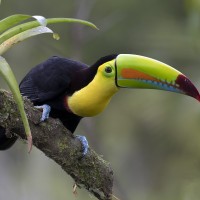 Christmas in Costa Rica Full! See our other Christmas trips.December 22 - 29, 2025
Christmas in Costa Rica Full! See our other Christmas trips.December 22 - 29, 2025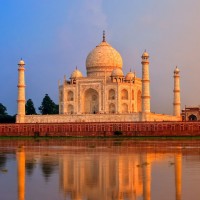 India: Birds, Tigers & the Taj Mahal FULL - Check out Japan: Birding & Nature!January 27 - February 10, 2026
India: Birds, Tigers & the Taj Mahal FULL - Check out Japan: Birding & Nature!January 27 - February 10, 2026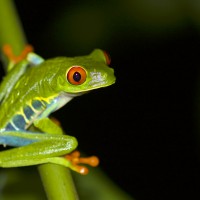 Costa Rica: Birding Across the Continental Divide Arenal Observatory & More! - FULL! See our Monteverde departure in March!February 16 - 25, 2026
Costa Rica: Birding Across the Continental Divide Arenal Observatory & More! - FULL! See our Monteverde departure in March!February 16 - 25, 2026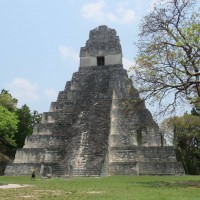 Best of Guatemala: Birding & Culture FULL! See our March Belize Short & Sweet trip.March 10 - 20, 2026, w/Tikal extension
Best of Guatemala: Birding & Culture FULL! See our March Belize Short & Sweet trip.March 10 - 20, 2026, w/Tikal extension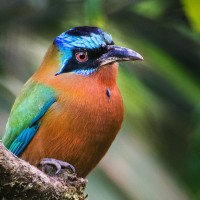 Trinidad & Tobago: Incredible Birds & WildlifeApril 10 - 19, 2026
Trinidad & Tobago: Incredible Birds & WildlifeApril 10 - 19, 2026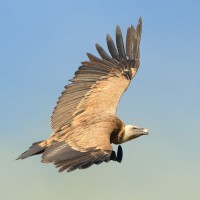 Spring in Spain: Birding & NatureApril 22 - May 5, 2026
Spring in Spain: Birding & NatureApril 22 - May 5, 2026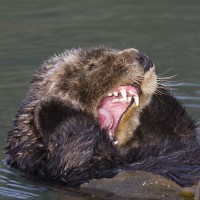 Olympic Peninsula Spring ExplorerMay 11 - 18, 2026
Olympic Peninsula Spring ExplorerMay 11 - 18, 2026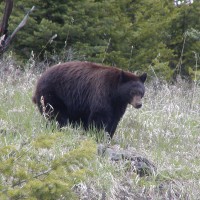 Yellowstone: Birds, Bears & Wildlife Only two spaces left!June 4 - 10, 2026
Yellowstone: Birds, Bears & Wildlife Only two spaces left!June 4 - 10, 2026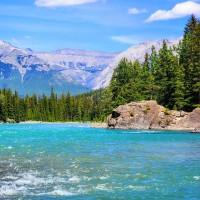 Into the Heart of Canada's Wild RockiesJune 18 - 26, 2026
Into the Heart of Canada's Wild RockiesJune 18 - 26, 2026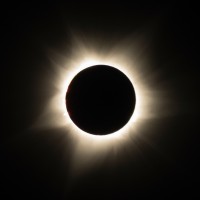 Spain: Birds, Bears, Wolves & Total Solar EclipseAugust 3 - 14, 2026
Spain: Birds, Bears, Wolves & Total Solar EclipseAugust 3 - 14, 2026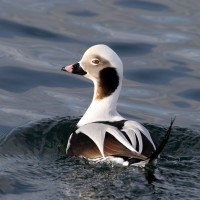 Olympic Peninsula Fall ExplorerSeptember 10 - 17, 2026
Olympic Peninsula Fall ExplorerSeptember 10 - 17, 2026 Southern India’s Western Ghats: Global Hotspot for BiodiversityNovember 7 - 21, 2026, w/Andaman Islands extension
Southern India’s Western Ghats: Global Hotspot for BiodiversityNovember 7 - 21, 2026, w/Andaman Islands extension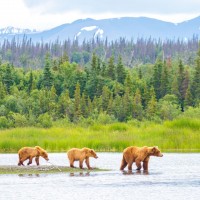 Aleutian Islands Adventure with Dutch Harbor & Kodiak IslandJune 15 - 25, 2027
Aleutian Islands Adventure with Dutch Harbor & Kodiak IslandJune 15 - 25, 2027


















